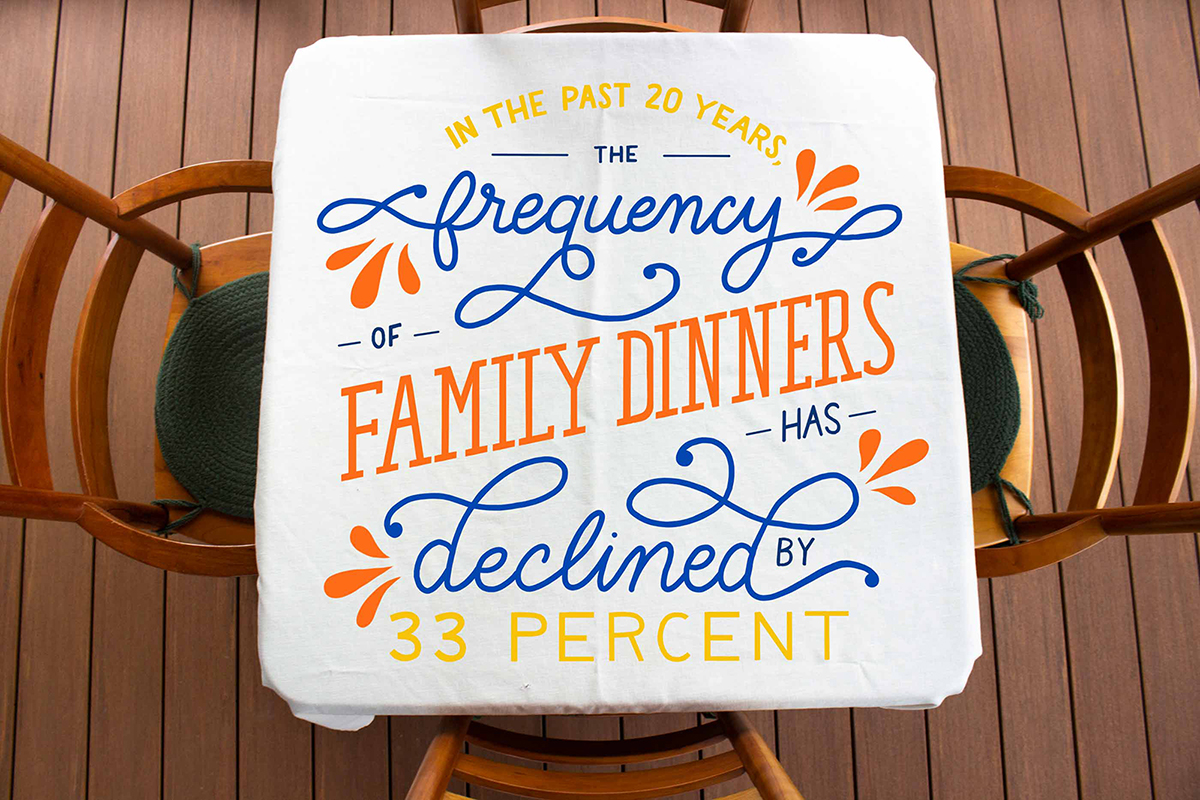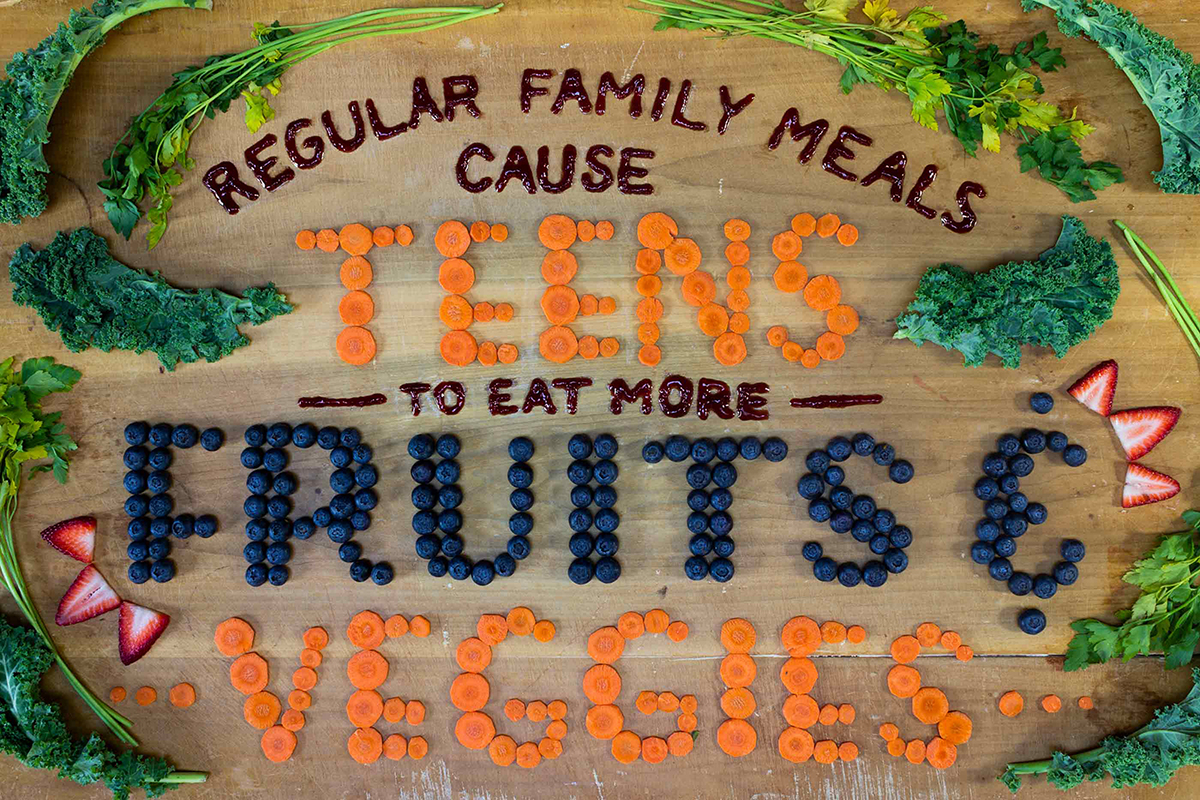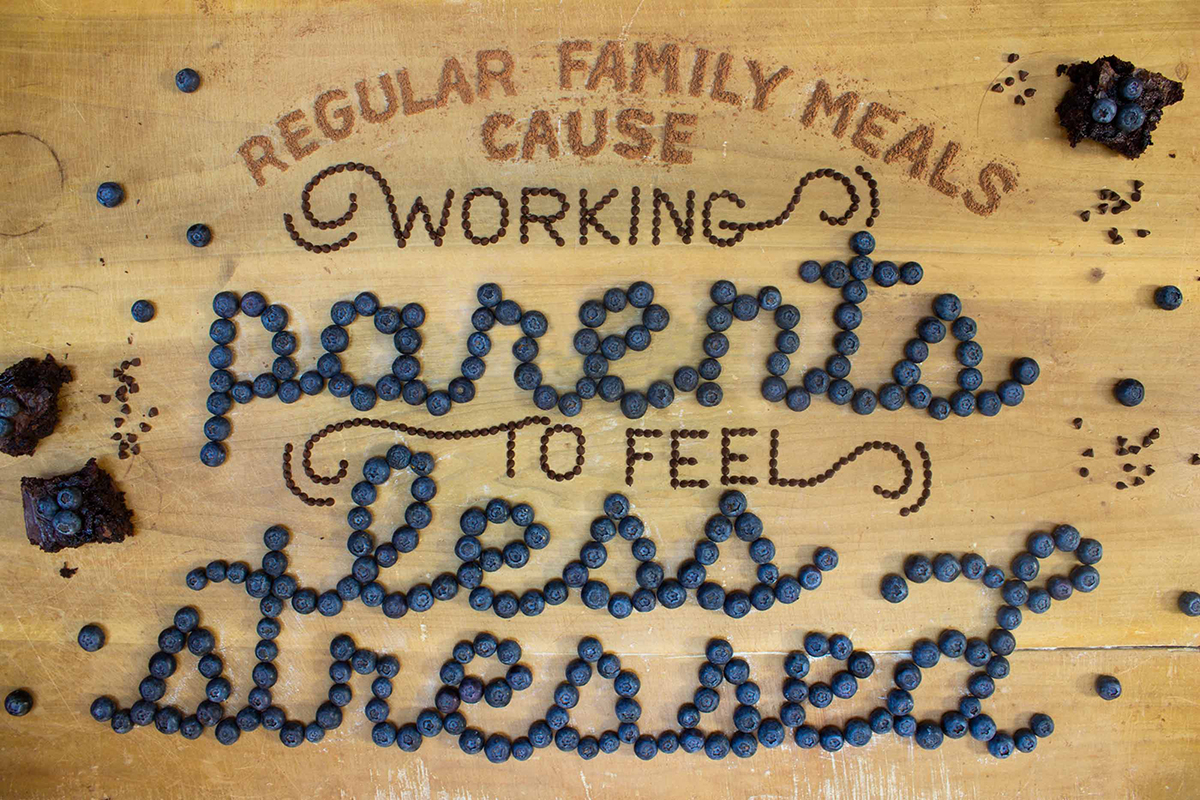
Medium: Digital lettering.
The Problem
Over the last several decades, the quality and frequency of family meals in American homes have gone down alarmingly. Several factors are to blame for this change, including longer work hours for parents, more extracurricular activities for kids, and an overall shift in family values.
According to a study by NPR and Harvard, 46% of parents say it is difficult to eat together on a regular basis. However, making time for family dinners is worth it because there are countless benefits to regularly eating together.
The Benefits
Eating regular dinners together is associated with higher consumption of fruits, vegetables, and dairy products in teenagers. Family meals promote healthy eating habits because everyone sits down and enjoys the same meal, usually prepared at home.
Eating together also prevents children from becoming overweight in adulthood. Over a ten-year period, researchers discovered that the teens who had eaten 5 or more family meals a week were 10% less likely to be overweight or obese later in life than those who ate no family meals.
View Timelapse Video
Medium: Raspberry jam, carrots, blueberries, strawberries, kale, and parsley.

Medium: Alphabet pasta, carrots, and crackers.
The Benefits
Family dinners almost always include conversation. For preschool-aged kids, table conversation can have a large impact on their vocabulary and ultimately literacy level.
One study measured this impact by counting the number of rare words that were used in conversation. Rare words are any words not included on the list of 3,000 most common words. The more rare words kids heard at the dinner table, the bigger their vocabulary was when they were a couple years older.
View Timelapse VideoThe Benefits
According to a study by Brigham Young University that surveyed 1,580 IBM employees, parents who work demanding jobs but still make it home for dinner experience less work-related stress and feel more successful as parents. In other words, eating together as a family offset the negative effects of long hours in the office — even if the parents returned to work after dinner.
View Timelapse Video
Medium: Cocoa powder, mini chocolate chips, blueberries, and blueberry brownies.

Medium: Ranch dip, carrots, and chalk.
The Solution
Building a routine of family meals from nothing can be intimidating. One useful tip is to include other family members in the process of preparing a meal so that it doesn’t all fall on one person.
Buying the groceries, preparing the ingredients, cooking the meal, setting the table, and doing the dishes are all tasks that can be distributed among family members, even children. For more tips on making regular family dinners a reality, check out this BYU article or this Family Dinner Project FAQ list.
View Timelapse Video